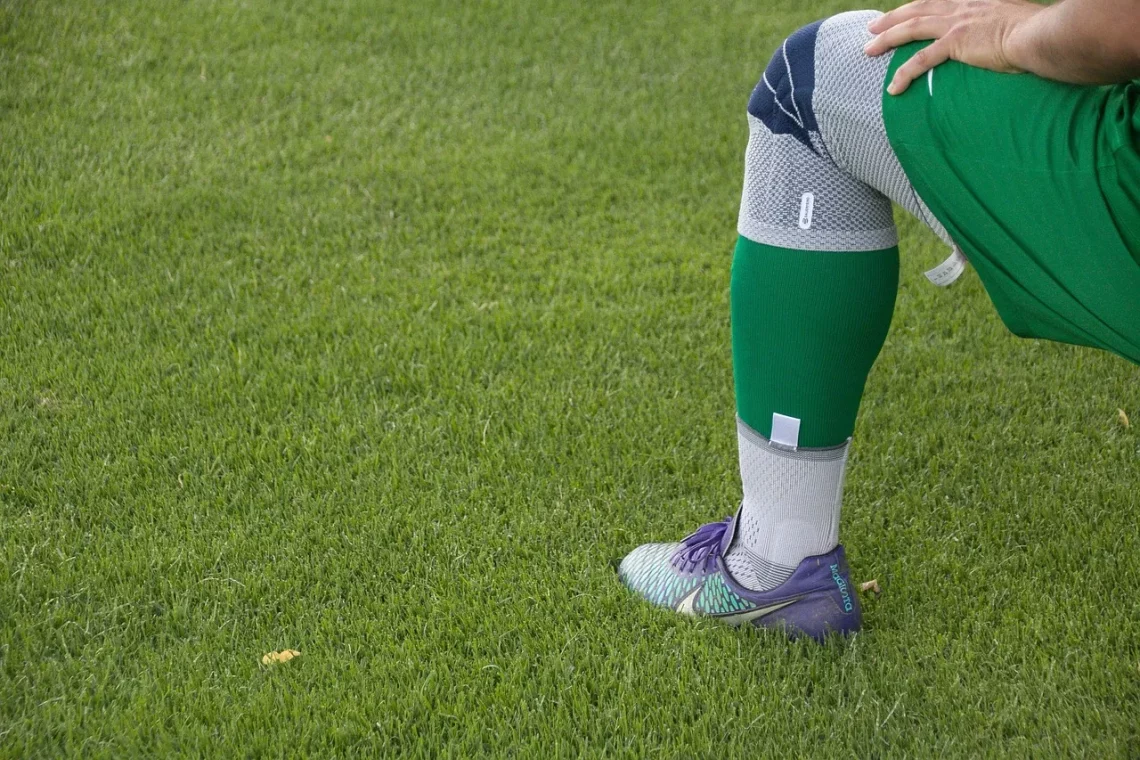
Understanding Naturally Hyperextended Knee: Causes and Solutions
Knee hyperextension is a common condition that affects a significant portion of the population. It occurs when the knee extends beyond its normal range of motion, leading to discomfort and potential injury. This phenomenon can be particularly prevalent among athletes and individuals who engage in high-impact sports, but it can also affect people in everyday activities. Understanding the underlying causes of naturally hyperextended knees is essential for prevention, management, and treatment.
The hyperextended knee can be the result of various factors, including anatomical variations, muscle imbalances, and previous injuries. The consequences of this condition can range from mild discomfort to severe pain and instability, affecting one’s quality of life and physical performance. Early identification and intervention are crucial in mitigating these risks, allowing individuals to maintain an active lifestyle while minimizing potential complications.
In this article, we will explore the complexities surrounding naturally hyperextended knees, shedding light on its causes, symptoms, and available solutions. By gaining a better understanding of this condition, individuals can take proactive steps towards better knee health, ensuring their mobility and overall well-being.
What Causes Naturally Hyperextended Knees?
Naturally hyperextended knees can arise from a combination of genetic, anatomical, and lifestyle factors. One of the primary contributors is the structure of the knee joint itself. In some individuals, the ligaments surrounding the knee may be more lax than normal, allowing for a greater range of motion. This hypermobility can be inherited and is often seen in people with connective tissue disorders such as Ehlers-Danlos syndrome.
Muscle imbalances also play a significant role in knee hyperextension. When certain muscles around the knee are weaker or tighter than others, they can cause the joint to move inappropriately. For instance, if the quadriceps muscles are significantly stronger than the hamstrings, this imbalance can lead to an overextension of the knee during movement. Similarly, tight calf muscles can restrict ankle motion, forcing the knee to compensate and hyperextend to maintain balance.
Previous injuries can also contribute to the development of hyperextended knees. When an individual has sustained an injury to the knee, such as an ACL tear or a meniscus injury, the surrounding structures may not function optimally during recovery. This can lead to altered movement patterns and increased susceptibility to hyperextension. Furthermore, individuals who have undergone knee surgeries may experience changes in joint mechanics that predispose them to this condition.
Lastly, certain sports and physical activities can exacerbate the risk of hyperextended knees. High-impact sports, such as basketball, gymnastics, and soccer, often involve sudden directional changes and jumps, putting excessive strain on the knee joint. Athletes who do not engage in proper warm-up and stretching routines may be at a higher risk for hyperextension due to lack of flexibility and strength in the muscles surrounding the knee.
Understanding these causes is crucial for both prevention and management of naturally hyperextended knees. By addressing the contributing factors, individuals can take proactive steps to improve knee stability and function.
Symptoms and Diagnosis of Hyperextended Knees
Identifying the symptoms associated with naturally hyperextended knees is essential for early intervention and effective management. The most common symptom is pain, which may occur during or after physical activity. The discomfort can range from mild to severe, often localized around the knee joint. Individuals may also experience swelling, which can be a result of inflammation in the surrounding tissues due to overuse or injury.
Another significant symptom is instability in the knee. Those with hyperextended knees may feel as though their knee is giving way, especially during activities that require sudden changes in direction or weight-bearing. This instability can lead to a fear of movement, causing individuals to alter their activities or avoid certain sports altogether.
In some cases, individuals may notice a visible deformity in the knee joint when standing. Hyperextended knees often appear to bend backward when viewed from the side, which can be a clear indicator of the condition. Additionally, individuals may experience stiffness, particularly after periods of inactivity. This stiffness can make it challenging to fully extend or flex the knee, affecting mobility.
To diagnose naturally hyperextended knees, healthcare professionals typically conduct a thorough physical examination. They may assess the range of motion, stability, and alignment of the knee joint. Imaging tests, such as X-rays or MRI scans, may also be utilized to rule out other underlying conditions and assess the integrity of ligaments and cartilage.
Early diagnosis is critical for the successful management of hyperextended knees. If left unaddressed, the condition can lead to further complications, such as chronic pain, arthritis, and increased risk of knee injuries.
Effective Solutions for Managing Hyperextended Knees
Managing naturally hyperextended knees requires a multifaceted approach that includes strengthening, flexibility training, and lifestyle modifications. One of the most effective solutions is engaging in a targeted exercise program designed to enhance the strength and stability of the muscles around the knee joint.
Strengthening exercises should focus on the quadriceps, hamstrings, and calf muscles. Incorporating resistance training can help to address muscle imbalances and improve overall knee stability. Exercises such as leg presses, hamstring curls, and calf raises can be beneficial. Additionally, incorporating balance and proprioception training, such as single-leg stands or stability ball exercises, can enhance coordination and control of the knee joint.
Flexibility training is equally important in managing hyperextended knees. Tight muscles can contribute to joint instability, so incorporating stretching routines can help to improve the overall range of motion. Stretching the hamstrings, quadriceps, and calf muscles can alleviate tension and promote better alignment of the knee joint.
In some cases, physical therapy may be recommended to provide individualized guidance and support. A physical therapist can develop a customized exercise program tailored to an individual’s specific needs, ensuring optimal recovery and management of hyperextended knees.
In addition to exercise, individuals may benefit from lifestyle modifications. This includes avoiding high-impact activities that exacerbate knee hyperextension, maintaining a healthy weight to reduce strain on the joints, and incorporating proper warm-up and cool-down routines during physical activity. Using supportive footwear and orthotic devices can also help improve knee alignment and reduce the risk of hyperextension.
Overall, a combination of strengthening, flexibility training, and lifestyle adjustments can significantly improve the management of naturally hyperextended knees, allowing individuals to maintain an active and fulfilling lifestyle.
Preventing Hyperextension and Protecting Knee Health
Preventing hyperextended knees is crucial, especially for those at higher risk due to their activities or anatomical predispositions. Proactive measures can significantly reduce the likelihood of developing knee hyperextension or its associated complications.
One of the most effective strategies for prevention is engaging in regular strength and conditioning programs. Athletes should focus on building strength in the muscles surrounding the knee joint, including the quadriceps, hamstrings, and calf muscles. This not only helps to stabilize the joint but also improves overall athletic performance.
Incorporating flexibility training into a regular fitness routine is also vital. Stretching exercises targeting the hamstrings, quadriceps, and calves can increase muscle elasticity and reduce the risk of strain or injury. Proper warm-up routines before engaging in physical activities are essential, as they prepare the muscles and joints for the demands of exercise.
For individuals with a history of knee issues, wearing supportive braces during high-impact sports can provide added stability and protection against hyperextension. Custom orthotics may also be beneficial for those with foot alignment issues that can contribute to knee instability.
Lastly, educating oneself about proper body mechanics during physical activities is crucial. Understanding how to move safely and maintain proper alignment can significantly reduce the risk of knee injuries. Coaches and trainers should emphasize the importance of technique, especially in sports that involve jumping, pivoting, or sudden changes in direction.
By adopting a proactive approach to knee health, individuals can effectively prevent hyperextension and maintain optimal joint function, allowing for an active lifestyle without the fear of injury.
In summary, understanding naturally hyperextended knees involves recognizing their causes, symptoms, and effective management strategies. By engaging in targeted exercises, adopting preventive measures, and seeking professional guidance when necessary, individuals can take charge of their knee health.
**Disclaimer:** This article is for informational purposes only and should not be considered medical advice. It is essential to consult with a healthcare professional for any health concerns or conditions.




